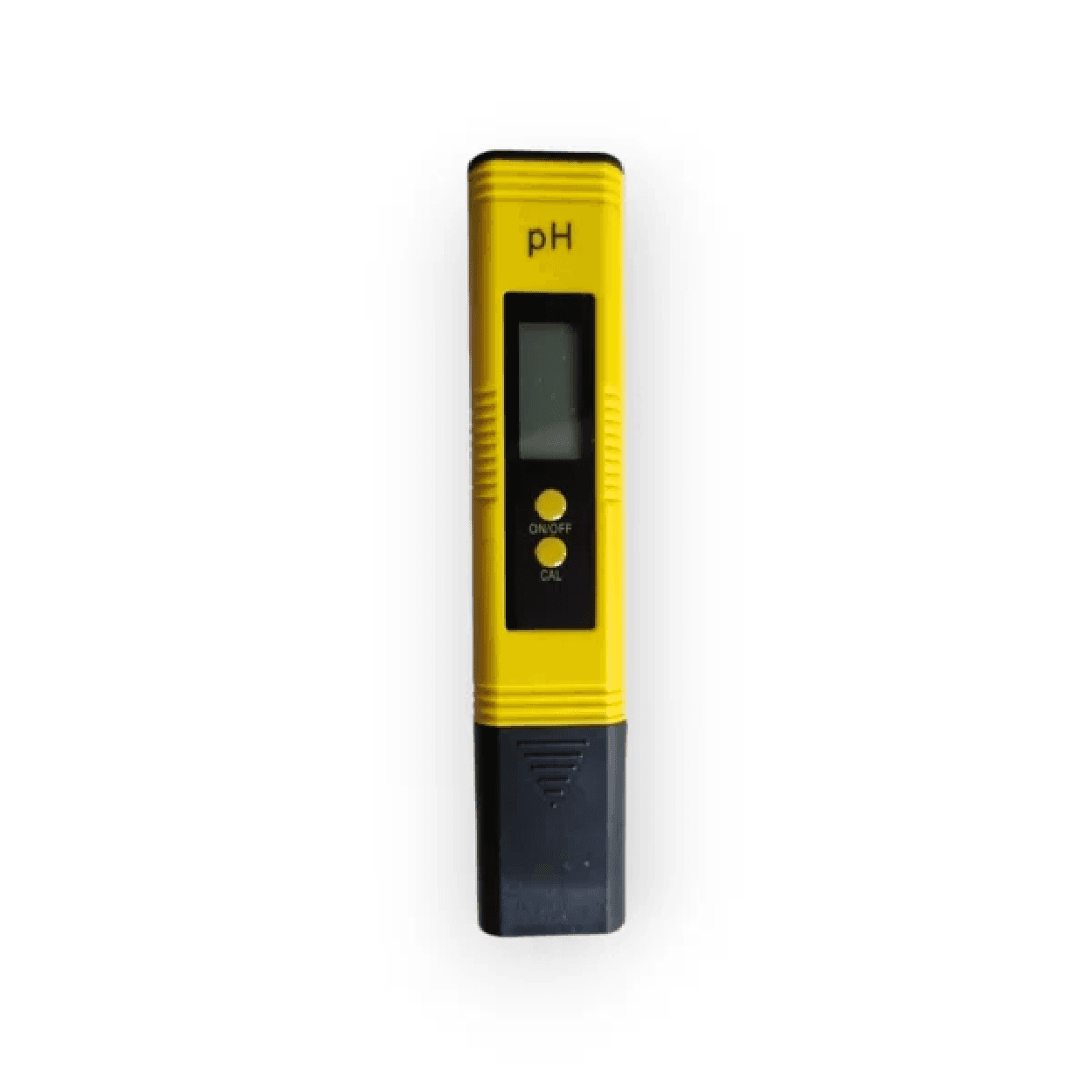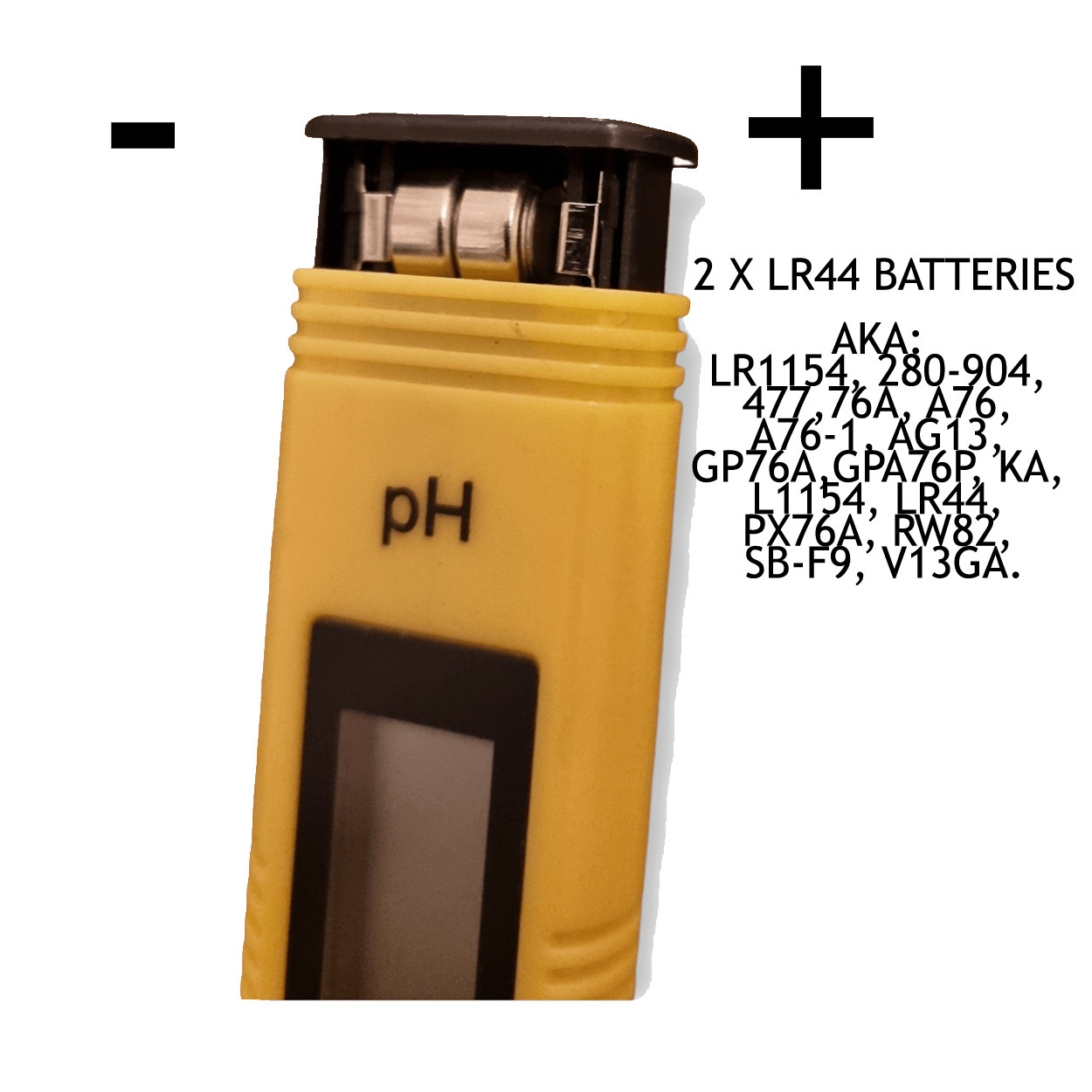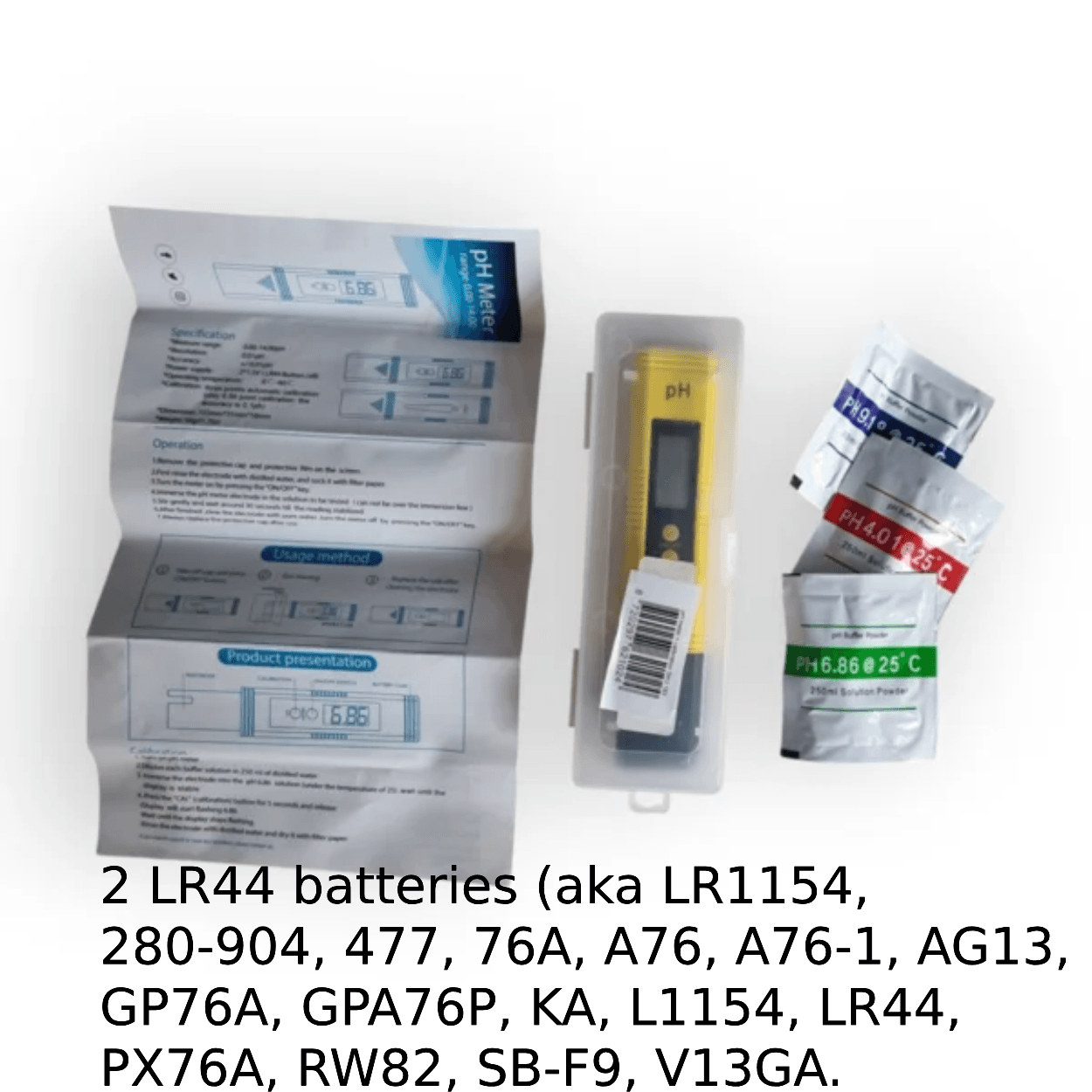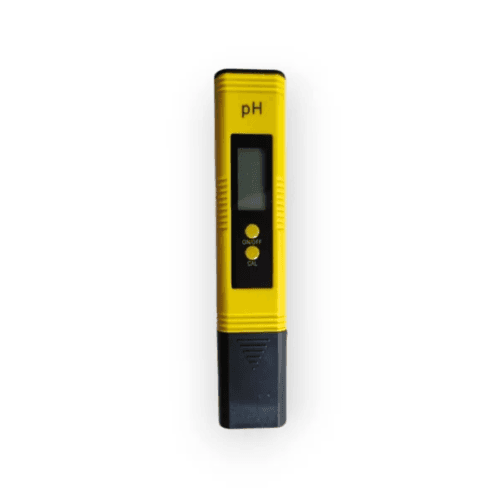pH tester for fermentation | for a safe fermentation
Acidity plays an important role in many forms of fermentation. The lower the pH, the safer your product. You can measure the pH accurately using this meter. With free calibrationset.
In stock
Product Description
What is pH?
The pH is a measure of the acidity of a watery solution. The pH of a neutral watery solution is around 7. At room temperature, acidic solutions have a pH lower than 7, and thus a high acidity. Alkaline solutions have a pH higher than 7 and therefore lower acidity. A pH tester determines this
About pH in fermentation
Acidity plays an important role in many forms of fermentation. The lower the pH, the more acidic your product is. The more acidic your product, the safer your product. In general, at a pH below 4.6, your fermented product is safe. However, pH is difficult to taste, see or smell precisely. That is why pH meters exist.
Why measure your pH when fermenting
✅ Fermentation is not without risk, using a meter will increase safety
✅ Better understand the process of fermentation
✅ Know when your product is done
✅ Become a better, knowledgeable fermenter
About this pH meter
This pH meter measures the full pH range from 0-14, with 0,01 accuracy.
What is the difference between a pH meter and pH strips
A pH meter is a lot more accurate and does not run out. Paper strips on the other hand are cheaper and do not require batteries.
How do you use this pH tester?
- Turn on the pH meter and dissolve each buffer solution in 250 ml of distilled water
- Immerse the electrode into the pH 6.86 solution, (below 25°C)
- Press the “CAL”(calibration)button for 5 seconds and release. The display will start flashing 6.86. Wait until the display stops flashing.
- Rinse the electrode with distilled water and dry it with a paper towel.
- Immerse the electrode in pH 4.00 solution
- Press”CAL” button for 5 seconds, then press it again and release it immediately
- The display will start flashing 4.00. Wait until the display stops flashing. Rinse and dry the electrode with distilled water as before.
- Place the meter back in the buffer solution to test calibration. If incorrect, please repeat the calibration.
What can you use the pH tester for?
Some examples: fermented vegetables, yoghurt, kombucha, water kefir, and other fermented drinks, vinegar. Please note, you cannot measure pH properly in semi-solid products such as cheese or sausages using this meter.
Contents
- 1 pH meter 0-14
- Instruction leaflet
- 1 set of calibration powder (2 bags)
- No batteries included
What batteries do I need for this pH tester?
2 LR44 batteries, which are also know LR1154, 280-904, 477, 76A, A76, A76-1, AG13, GP76A, GPA76P, KA, L1154, LR44, PX76A, RW82, SB-F9, V13GA. They are very common and can be bought everywhere. The Action sells them cheaply.
Buying a pH tester?
Order your pH tester at startercultures.eu, the European webshop for all your fermentation needs. By Meneer Wateetons, renowned Dutch fermentation expert and author. Order on weekdays before 3 pm and we’ll ship the same day. Questions on the usage of the pH tester? Ask them in our chat, we’re here to help!
Online Vegetable Fermentation course
Read More >
29 reviews for pH tester for fermentation | for a safe fermentation
| 5 star | 79% | |
| 4 star | 20% | |
| 3 star | 0% | |
| 2 star | 0% | |
| 1 star | 0% |
Acidity plays an important role in many forms of fermentation. The lower the pH, the safer your product. You can measure the pH accurately using this meter. With free calibrationset.









even puzzelen met de batterij. Maar hij werkt!
was fijn geweest als batterijen meegeleverd waren geweest.
Na eerste ijking was de eerste meting zuurder dan verwacht, verder gelijkmatig gemeten.
Plaatsing knoopcellen is meer gokken dan echte + of – aanduiding; tekening dompellijn niet echt duidelijk waar die nou zit.
Nog niet gebruikt? Ik heb de producten nog niet gebruikt dus ik weet het nog niet,
Ziet er goed uit maar nog niet gebruik, moet nog een batterijtje kopen
Het was even puzzelen met de knoopcellen, hoe ik die moest plaatsen en voor het kalibreren van twee standen moet je echt heel goed lezen wat te doen en naar het schema kijken. De tweede meting werkt net even anders. Als de tweede keer niet goed gaat alles gewoon overnieuw doen. Goede meter.